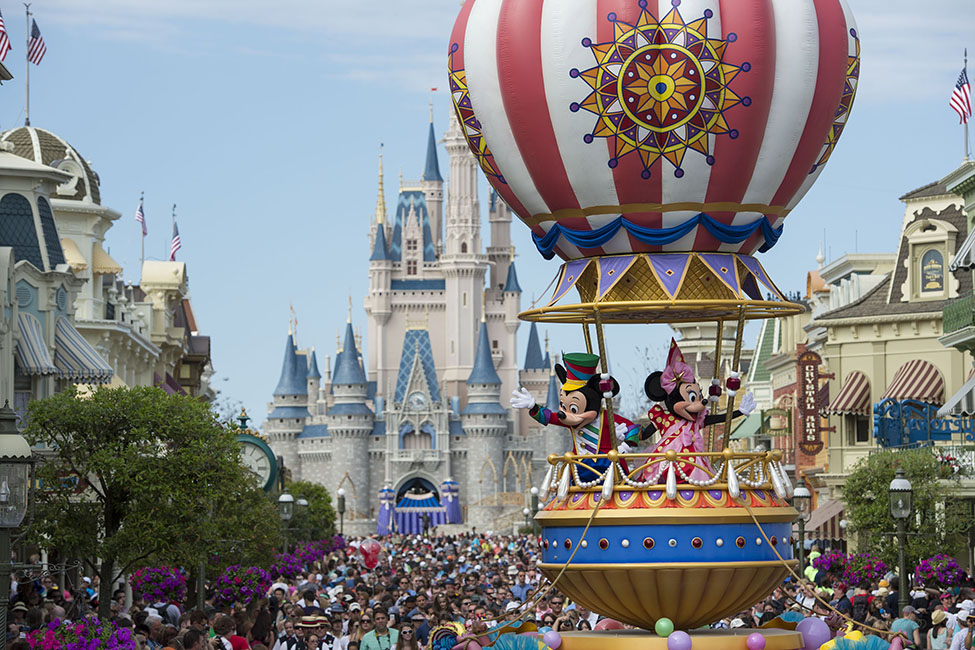
The Key to Disney’s World Class Service: Part Art, Part Science, and Part Magic — PEN August 2018
August 22, 2018
As the story goes, a guest at Disney World once asked “what time is the 3 o’clock parade?” That’s a peculiar question, mainly because it normally would lead to an obvious answer. But Disney Cast Members (their word for employees) are trained to probe beyond the obvious so that they can provide an extraordinary Guest (customer) experience. In this case, the worker asked a few more questions to uncover what the customer really wanted to know like “What time will the parade get to me?” or “How early should I start waiting to get a good viewing spot?” or “Where is the best place to stand when it passes?”.
At Disney – as is the case with any of our businesses or organizations – sometimes the customer’s first statement really doesn’t capture their true needs. But, as we all know, the ability to uncover – and then deliver against – those true customer needs separates high performing from just average organizations. And it’s one of many best practices that makes Disney’s level of service truly world class…
PEN is hosting a special one-day learning retreat Friday, October 5 at the majestic Lowell Inn in picturesque (especially in the fall) Stillwater, Minnesota: Creating WOW World Class Service Moments: the Disney Way! Given that powerful event is on the horizon, I just read six different articles that summarize Disney’s best practices in customer service. Combined, those articles listed seven best practices in focusing on the customer – practices that absolutely improve levels of service, increase levels of customer satisfaction and engagement, and ultimately increase customer loyalty, retention, revenue and market share. And practices that will work in any type of organization.
Whether you work for a service business, a manufacturer, a healthcare system or facility, an education institution, a nonprofit organization, or a governmental agency, your organization serves customers (or patients or students or citizens or stakeholders). And the better, more consistently you serve those customers, the stronger your customers’ advocacy and the better your organization’s outcomes. So read on – these practices can help any leader or professional in any type of organization deliver world class service!

Make every customer feel important – Disney employees are trained to be what the company calls “assertively friendly.” Disney Cast Members actively seek contact with Guests, engaging them, asking questions, noticing behaviors that may signify needs. Think about the Guest that is holding a camera or phone looking for someone to take a shot, or the Guest that is holding a map and looks a little confused, or the Guest that looks hot or tired and could use a bench or water fountain or maybe an ice cream cone. Every customer has stated and unstated needs. Disney’s employees try to quickly uncovering those needs, so that they can transform a Guest’s experience from ordinary to magical (and memorable).
Be a good communicator – Every employee at Disney receives communications training that instructs employees to explain clearly when there are any issues (such as a train leaving even 30 seconds later than scheduled); to answer common questions even if it’s “not their job” to do so (think of the “what time does the 3 o’clock parade start?” question); and to know any number of details about any number of aspects of the Disney product. Most organizations don’t invest the time or money in helping their employees effectively communicate with customers, and as a result, many customer interactions lead to less than fully satisfying experiences. The “moment of truth” in any business is when an employee and customer engage in dialogue. Helping equip your staff with answers about products, services, processes, and other details can make or break a customer interaction.
Strive for consistency – At Disney, there are a lot of rules. There are rules that deal with employee appearance (regarding facial hair, hairstyles, jewelry). There are rules that deal with how you act when engaging with customers, as captured in their Four Key Basics:
- I project a positive image and energy
- I stay in character and play my part
- I am courteous and respectful to all guests including children
- I go above and beyond
And there are rules for managers on their expected behaviors:
- I lead with a positive attitude and demonstrate commitment to Cast Members
- I know and manage my operation and teach it to Cast Member
- I recognize and hold Cast Members accountable for delivering The Four Key Basics.
These rules were established because they represent what is preferred by Disney customers. As such, they set expectations of behavior of all employees: they are taught in training (all employees receive “Traditions” training at the beginning of employment that focuses on cultural expectations), and they are reinforced with continuous feedback and reward/recognition. Many organizations – I would say most organizations – don’t spend the time codifying and articulating (let alone training, communicating, and reinforcing) expectations of behavior. But they should because these traditions, expectations, and rules set the parameters for your culture. And customers experience your organization’s culture through the interactions with your people.
Be show ready – While most people notice the obvious at Disney properties (the rides, the exhibits, the parade, the facilities), another factor that makes Disney extraordinary is what you don’t see: trash. Disney prides itself in being “show ready,” removing trash constantly so that the grounds are spotless. And it’s everyone’s job: custodians certainly, but also any employee or manager at any level is trained to spot and remove trash. Think of all the examples where you’ve experienced the opposite: a restaurant perhaps with workers smoking outside the building just a few steps from the front doors; a retail business that has employees clustering in aisles talking and gabbing rather than working and serving customers; a manufacturer that operates dirty assembly lines or maintains cluttered office space. Customers have a choice, and sometimes that choice comes down to perception and image. Regardless of the nature of your business, be show ready at all times.

Create a common purpose – Organizations that truly thrive have a purpose – a mission – that’s shared by all employees (and partners): a reason for existing that goes beyond the day-to-day operations and that gives meaning to employees’ roles and to those they serve. Disney’s purpose is: “We create happiness by providing the best in entertainment for people of all ages everywhere.” With that powerful statement, Disney Cast Members know that their ultimate goal is to create an experience that leads to pleasure for every single Guest; they are then empowered to then deliver on that purpose. A strong purpose or mission creates a shared goal. For a hospital or a medical device company, it may be about saving lives; for an educational institution, it may be about creating the leaders of our future; for a nonprofit or governmental agency, it could be about number of things that improve communities, the environment, or the lives of those they serve. What’s your organization’s true purpose, and how do you enable your team to achieve it?
Measure what matters – The cornerstone of Disney’s success is in exceeding customer expectations rather than simply satisfying them. And therefore, in addition to customer satisfaction, Disney measures customer retention and all sorts of other measures to try to gauge true customer engagement. They also use SMART goals in their measurement system (Specific, Measurable, Attainable, Relevant, and Time-based), so that employees can work to improve specific aspects of their processes in a way that’s meaningful to their customers.
View customer relationships as a long-term investment (and work to recover from service failures) – the number one reason Guests return to Disney is customer service, but Disney has also discovered that the number one reason that they don’t return is also (poor) customer service – not cost, not wait times, not weather, but service breakdowns. Yes, despite all of their strengths, Disney does have occasional breakdowns, but what sets them apart again is how they respond. Disney follows a systematic process for service failure that spells the word LAST (which also makes it easy to remember for employees): Listen, Apologize, Solve the problem, and Thank the customer
- They listen and probe to fully understand the customer’s issue, then
- Immediately acknowledge and apologize for the breakdown (regardless if the issue was the result of Disney’s failure or not).
- Employees are empowered to solve the problem, even if it requires some sort of compensation to the customer (refunds, free passes to the park another day, free dinners, and so forth).
- And employees wrap up the exchange with the customer by thanking them for bringing the issue to their attention, probably noting that it’s the only way that the company can learn and improve.
Disney realizes that 75% of their Guests are repeat customers and that if they can recover from a service issue they improve their chances of retaining each one of them, which could eventually improve loyalty, positive referral, and overall results.
Side note: there is a lot of data to back this up: TARP research indicates that a customer who complains and is satisfied with the resolution is 30% more loyal than one who does not complain in the first place (so the trick is to engage with your customers to actually get them to complain!). However, customers who complain but remain dissatisfied are 50% less loyal than those who did not bother to complain (so for Pete’s Sake: once you hear them out, resolve the issue!).
Don’t view your customers as a transaction, but rather take a long-term view of your relationship with them. Even if you have to “give” in the short-term, the benefits more than pay off over time.

In Summary…
According to legend, Disney theme parks were created by two individuals: one with a strong entertainment background (which is understandable) and one with a strong military background (which may be somewhat surprising). But think about that for a second. If that’s really the case, then it’s no wonder why Disney is so successful: their operations represent a blend of art (relationships, entertainment, fun, experience) and science (a strong focus on culture, process and systems that provide consistently high service). I suppose that should be the case for any of our organizations. Successful business is about providing something of value (a product, a service, a program) that satisfies a customer’s need in exchange for payment. But it’s also about people – satisfying or exceeding needs, building relationships and trust, and creating an experience that makes us want to engage again. This is what Disney has mastered so much better than most of the rest of us: they have blended the art and the science – the relationship and the process – to create something that truly is magical.
In many ways, Disney’s key to success is simple. They’ve learned that the way to increase profit is to maximize customer retention rates. And the way to retain customers is through world class service that exceeds expectations. And the way to exceed expectations is to select, train, and then empower the right employees. Those best practices could work in any organization (at least any organization that serves customers!).
To learn more about Disney’s approach to providing world class service, consider attending PEN’s October 5 retreat. We WILL sell this event out (we’re 3/4 full now!), so register today!
What other insights do you have regarding how customer service can lead to great performance? Participate in a discussion on this topic: visit our LinkedIn group to post a comment.
Never stop improving!
Brian S. Lassiter
President, Performance Excellence Network
www.performanceexcellencenetwork.org
Catalyst for Success Since 1987!
Photo credit: Disneyworld.com

